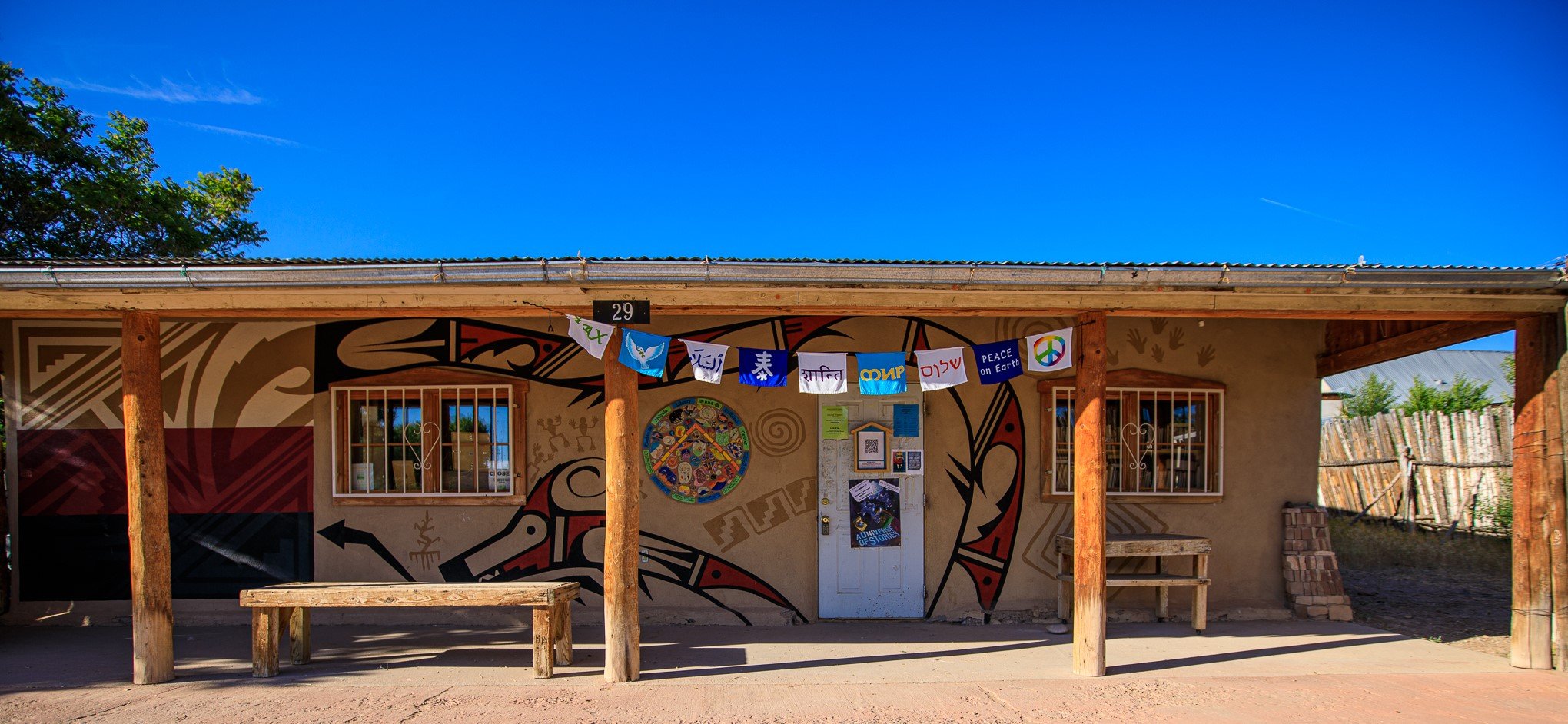
You have to know the past to understand the present.
Abiquiú History
-
Abiquiú means “wild chokecherry place” in the Tewa language. Phé shúu ú (also known as P'efu or Avéshu), was the name given by the Tewa people to what is now known as Abiquiú,
-
Abiquiú was established by Spanish colonists in 1754. There are remnants of numerous prehistoric communities from the 11th and 12th centuries that were once the ancestral homeland of the historic Pueblo people of Santa Clara and San Juan (now Ohkay Ohwingeh).
-
“Genízaro” refers to people of mixed American Indian and Spanish parentage. Spanish ranchers and farmers move into the Rio Chama valley and begin purchasing Indigenous war captives from Native communities, converting them to Catholicism and enslaving them to create a labor force.
For more information on the Genizaros of Abiquiú, please go to:
-
By 1744 there were some 20 families were living in the Abiquiú area. They founded the Plaza de Santa Rosa de Lima. The Santa Rosa de Lima church as built aroudn 1744 and was in use until the 1930’s. There were many raids by the Utes and the Comanches during this time. This caused the settlement to be abandoned in 1747. In 1750, the Spanish founded a new settlement at the present site of Abiquiú, about a mile from Santa Rosa de Lima. The adobe ruins of the church remain today and belongs to the Archdiocese of Santa Fe. It is listed on the National Register of Historic Places.
-
Abiquiú is the ancestral homeland of the historic Pueblo people of Santa Clara and San Juan (now Ohkay Ohwingeh).
-
Land grants were awarded to individuals and communities by the Spanish and Mexican governments to encourage settlement and expansion. In 1754, Governor Cachupín gave the Abiquiú Land Grant jointly to the Spanish and Genízaro families. Abiquiú became the third Genízaro settlement in New Mexico (after Belen and Trampas). La Merced del Pueblo Abiquiú manages the Land Grant to this day.
-
The church played a pivotal role in Abiquiu. It served the village both spiritually and provided safety during attacks and raids. Governor Cachupin ordered the settlers to return to the village in 1750. They built a 370-square foot plaza on a hill a couple of miles north of the prior town-site at Santa Rosa de Lima. The Santo Tomás church was built
-
Tsi-p 'in-owinge is the Cultural Heritage site for an ancestral Tewa Pueblo - Tsi-p 'in-owinge (Village at Flaking Stone Mountain). The pueblo was built around 1275 A.D. high on top of a mesa. At its peak, more than 1,000 pueblo people lived here. The pueblo was abandoned by 1450. A permit is required to visit and can be obtained through the Canones Ranger District.
-
Abiquiú was the starting point of the pioneering route of the Old Spanish Trail. Known as the Armijo Route, it was led by Antonio Armijo of Santa Fe. The caravan left Abiquiú on November 7, 1829, and made the journey to San Gabriel Mission in 86 days, arriving on January 31, 1830. He returned by the same route in 56 days, leaving on March 1 and arriving on April 25, 1830.
-
Item description
-
Bode’s was originally Grants Mercantile and was opened in 1890. It was a general store, post office, stage coach stop and jail. The Grant Brothers were from New York and became successful merchants. In 1919 Martin Bode purchased the store and became a important member of the community - hence the name Bodes.
-
The Penitente Brotherhood (Hermanos) is an association of Catholic men who provide a wide variety of services and spiritual support. They have been an integral part of rural northern New Mexico’s spiritual life for centuries.
-
There were many power struggles between Spanish officials and Franciscan priests was common. Governor Cachupin allowed the Pueblos to resume their spiritual ceremonies and traditions. The Catholic priests retaliated. Abiquiú, Father Juan José Toledo accused Governor Cachupin of bebewitched by the Genízaros. An Inquisition ultimately cleared the Governor. Father Toledo was charged with heresy and excommuincated from the church.
-
The New Mexico State Dinosaur/Fossil. The first remains of were found in 1881. In 1947 a large “graveyard” of Coelophysis was found at the Ghost Ranch.
-
An acequia is an irrigation ditch or canal. The acequias of New Mexico are still in use today to preserve and share water. Abiquiú has several acequia systems throughout the community. Agua es Vida
-

Santo Tomas Parish
-

Santa Rosa de Lima
-

Georgia O'Keeffe
-

Poshuouinge Ruin
